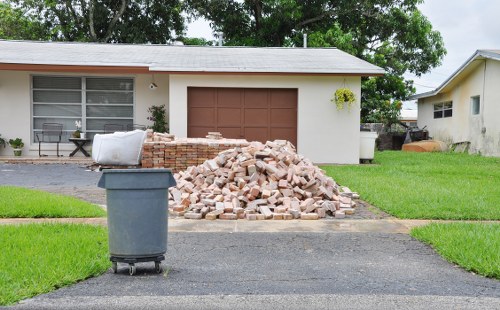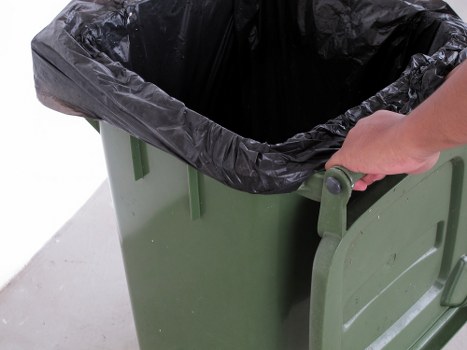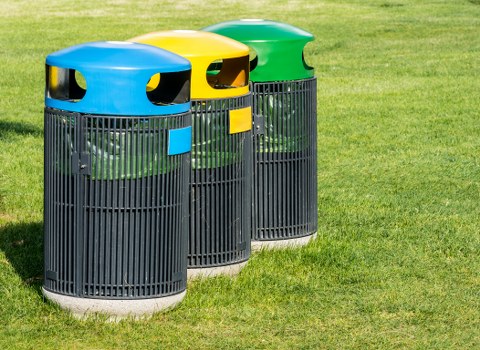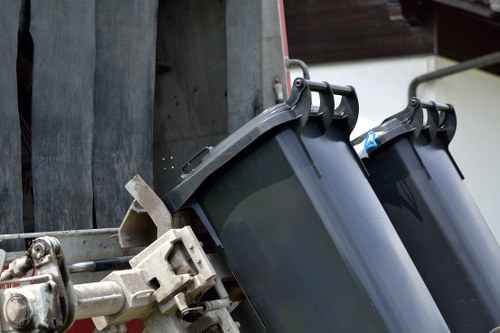Hoarder Clearance in Commercial Waste Collection
Understanding Hoarder Clearance

Hoarder clearance in commercial waste collection is a specialized service addressing the accumulation of excessive waste and clutter in business environments. Unlike standard waste collection, hoarder clearance requires a sensitive and strategic approach to effectively manage and remove large volumes of discarded materials.
Businesses experiencing excessive waste accumulation may face operational challenges, health hazards, and aesthetic issues. Implementing professional hoarder clearance services ensures a clean, safe, and efficient workspace, promoting productivity and a positive image.
Effective hoarder clearance involves not only the removal of waste but also the responsible disposal and recycling of materials. Commercial waste collectors must adhere to environmental regulations and best practices to minimize the ecological impact of waste management.
Key Benefits of Hoarder Clearance Services

Engaging in hoarder clearance services offers numerous advantages for businesses. These services help in maintaining a hygienic environment, reducing the risk of pest infestations, and preventing potential legal issues related to waste management.
Moreover, professional clearance enhances the overall appearance of the commercial space, making it more inviting for clients and employees alike. A well-maintained environment reflects positively on a company's brand and commitment to quality.
Additionally, efficient waste clearance can lead to cost savings by optimizing waste management processes and minimizing unnecessary expenditures on storage and handling of excess materials.
Steps Involved in Commercial Hoarder Clearance

The process of commercial hoarder clearance typically involves several key steps. Initially, a comprehensive assessment of the affected area is conducted to identify the types and volumes of waste present.
Following the assessment, a customized clearance plan is developed, outlining the strategies for safe and efficient removal of materials. This plan includes timelines, resource allocation, and methods for segregation and disposal.
Execution of the clearance plan involves the physical removal of waste, followed by thorough cleaning and sanitization of the space. Proper documentation and reporting ensure compliance with regulatory standards.
Environmental Considerations

Environmental responsibility is a crucial aspect of commercial hoarder clearance. Waste collected during the clearance process must be sorted to identify recyclable, reusable, and non-recyclable materials.
Recycling initiatives help reduce the environmental footprint of waste management by diverting materials from landfills. Commercial waste collectors play a pivotal role in promoting sustainable practices through effective recycling programs.
Additionally, adhering to environmental regulations ensures that businesses remain compliant and avoid potential fines or penalties associated with improper waste disposal.
Choosing the Right Waste Collection Service

Selecting a reputable commercial hoarder clearance service is essential for achieving desirable outcomes. Key factors to consider include the provider's experience, range of services, and commitment to environmental sustainability.
It's important to assess the company's certifications, customer reviews, and adherence to industry standards to ensure reliability and quality of service.
Engaging with a service that offers tailored solutions and flexible scheduling can enhance the efficiency of the clearance process, minimizing disruptions to business operations.
Challenges in Hoarder Clearance and Solutions
Commercial hoarder clearance presents unique challenges, including handling hazardous materials, managing sensitive situations, and ensuring the safety of personnel involved in the clearance process.
To address these challenges, waste collection services must implement strict safety protocols, provide specialized training to their staff, and utilize appropriate equipment for handling and disposal.
Effective communication with business owners and stakeholders is also vital to navigate sensitive situations and ensure a respectful and efficient clearance process.
Cost Factors in Hoarder Clearance
The cost of commercial hoarder clearance can vary based on several factors, including the volume and type of waste, the complexity of the clearance, and the location of the business.
Additional services such as cleaning, sanitization, and recycling may influence the overall cost. It's important for businesses to obtain detailed quotes and understand the pricing structure to make informed decisions.
Investing in professional hoarder clearance can result in long-term savings by preventing property damage, maintaining operational efficiency, and enhancing the business's reputation.
Regulatory Compliance in Waste Management
Adhering to local and national regulations is a critical component of commercial hoarder clearance. Waste collection services must be knowledgeable about the legal requirements related to waste disposal, recycling, and environmental protection.
Compliance ensures that businesses avoid legal repercussions and contribute positively to environmental sustainability efforts. It also demonstrates a commitment to responsible waste management practices.
Professional services often handle the complexities of regulatory compliance, allowing businesses to focus on their core operations without concerns about legal obligations.
Technological Advances in Waste Collection
Modern technology plays a significant role in enhancing the efficiency and effectiveness of commercial hoarder clearance. Advanced equipment and software solutions streamline waste collection processes, improve tracking, and optimize resource allocation.
Innovations such as automated sorting systems and real-time monitoring facilitate better management of waste materials, ensuring timely and accurate disposal.
Embracing technological advancements enables waste collection services to offer superior solutions, reducing operational costs and enhancing service quality.
Employee Training and Safety
Ensuring the safety of employees involved in hoarder clearance is paramount. Comprehensive training programs equip staff with the necessary skills and knowledge to handle various waste types safely.
Implementing safety protocols and providing appropriate personal protective equipment (PPE) minimize the risk of accidents and injuries during the clearance process.
Ongoing education and training initiatives keep employees informed about the latest safety practices and regulatory changes, promoting a safe and compliant work environment.
Sustainable Practices in Hoarder Clearance
Sustainability is increasingly becoming a priority in commercial waste management. Hoarder clearance services that prioritize sustainable practices contribute to environmental preservation and corporate social responsibility.
Implementing waste reduction strategies, promoting recycling, and utilizing eco-friendly disposal methods are key components of sustainable clearance services.
Businesses benefit from partnering with environmentally conscious waste collection providers by enhancing their sustainability credentials and reducing their overall environmental impact.
Customer Service Excellence
Exceptional customer service is essential in commercial hoarder clearance. Providing timely, reliable, and courteous service fosters positive relationships with clients and encourages repeat business.
Effective communication, transparency in processes, and responsiveness to client needs are hallmarks of outstanding customer service in waste collection services.
Businesses should seek waste collection partners that prioritize customer satisfaction and demonstrate a commitment to meeting and exceeding client expectations.
Future Trends in Commercial Waste Collection

The future of commercial hoarder clearance is poised to be shaped by emerging trends such as increased automation, integration of artificial intelligence, and a greater emphasis on circular economy principles.
Advancements in technology will continue to enhance the efficiency of waste collection processes, while sustainability initiatives will drive the adoption of more eco-friendly practices.
Staying abreast of these trends enables businesses to align their waste management strategies with evolving industry standards and environmental goals.
Implementing Effective Waste Management Strategies
Developing and implementing effective waste management strategies is crucial for businesses dealing with hoarder clearance. This involves setting clear objectives, establishing protocols, and continuously monitoring performance.
Strategies should focus on reducing waste generation, optimizing collection processes, and ensuring responsible disposal and recycling practices.
Regular evaluation and improvement of waste management practices help businesses maintain compliance, enhance efficiency, and contribute to environmental sustainability.
Conclusion and Next Steps
Hoarder clearance in commercial waste collection is a vital service that supports the cleanliness, safety, and efficiency of business environments. By engaging professional services, businesses can effectively manage excessive waste, comply with regulations, and promote sustainable practices.
Investing in comprehensive hoarder clearance solutions not only addresses immediate waste concerns but also contributes to long-term operational success and environmental responsibility.
Contact us today to book your service and transform your workspace into a clean and productive environment.